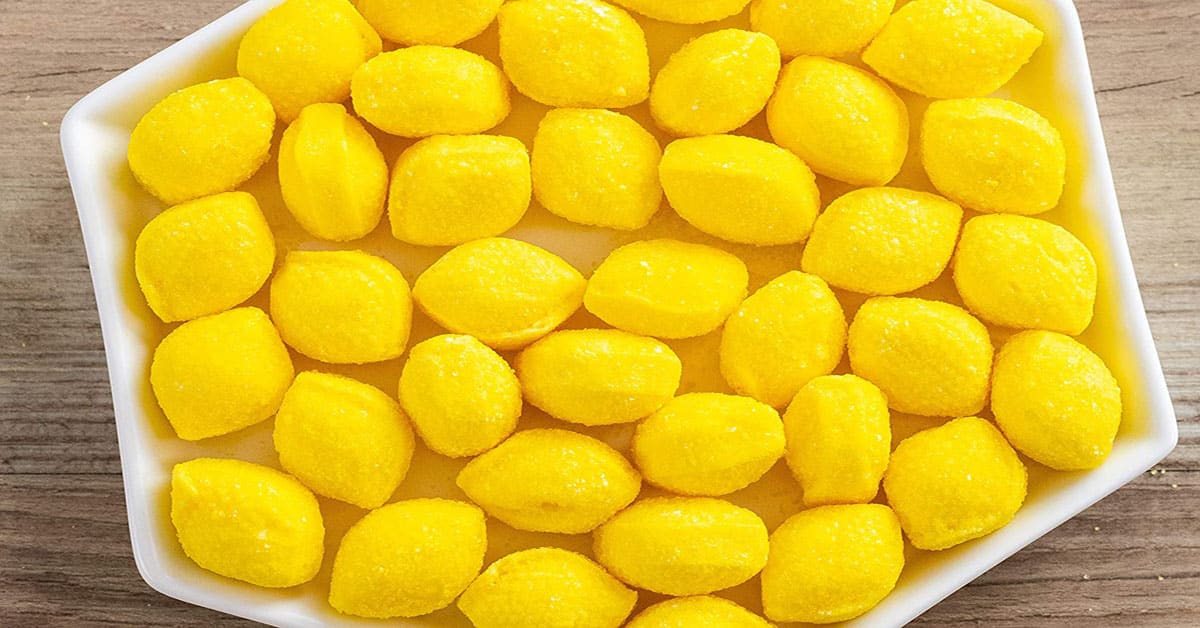Lemon Drops Candy – Sweet, Tangy & Zesty Vintage Flavors
Lemon drops have long been a popular candy among people of all ages. From the young to the elderly, not only are they extremely delicious, but they are also known to have some medicinal health benefits. There are numerous Lemon Drops Candy brands all over the world. The thing that unites all is the breathtakingly flavorful taste of zesty lemon.
In this article, you will find the history, origins, and benefits of Lemon Drops candy.
Please leave a review or any memories of this snack in the comments at the bottom of this page. Thank you!
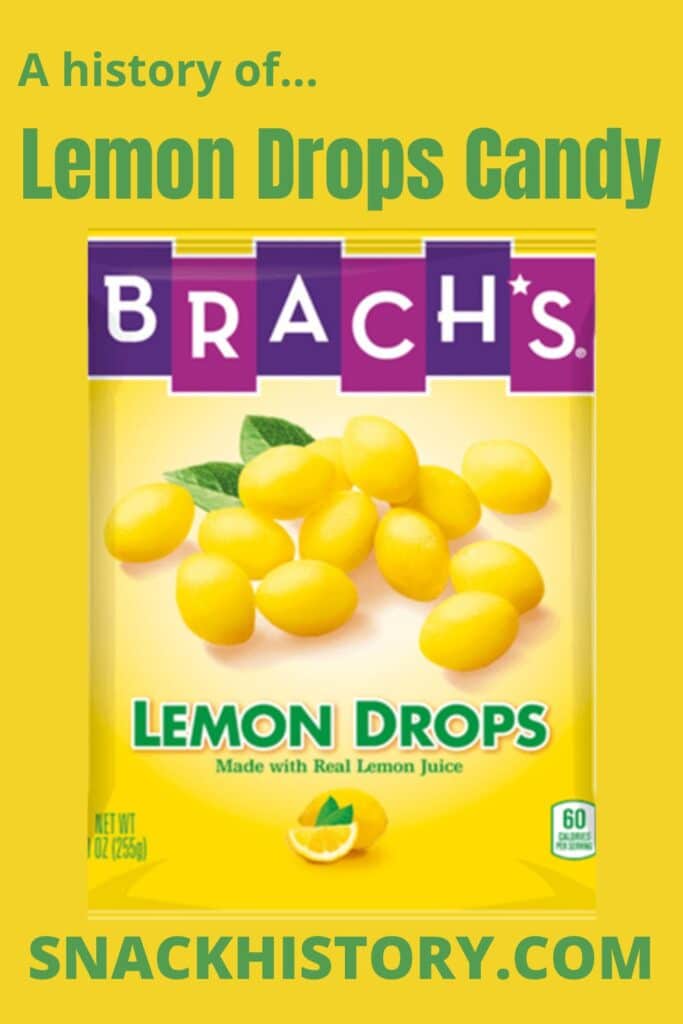
Overview
A “lemon drop” is a sugar-coated, lemon-flavored confection that is frequently shaped like a lemon and is typically yellow. The delectable sweets known as Lemon Drops Candy have been around since the early 1800s. Lemon Drops got their start in England, where confectioners discovered that boiling sugar mixtures with acids like lemon juice prevented sugar from crystallizing. Lemon Drops Candy is frequently shaped like smaller versions of lemons.
Early on in the history of the Lemon Drops candy, it was customary to buy them at neighborhood drug shops as a remedy that would mask unpleasant tastes. Cough drops or throat lozenges with a lemon taste may be referred to as “Lemon Drops.”
Lemons are also a good source of vitamin C, and those prepared with real lemon juice may also help with nausea, constipation, and even some types of cancer.
In some cases, the word “lemon drop” is also used to describe an alcoholic beverage made with lemon juice, vodka, and sugar.
The Salem Gibraltar, which was invented in 1806, is a precursor of the lemon drop. Like the majority of hard sweets, we are familiar with today, modern Lemon Drops candy is descended from historic lozenges. Hard sugar concoctions were made feasible by sugar technology advancements in the 18th century.
Salem Gibraltar
As already mentioned above, Salem Gibraltar was the precursor of Lemon Drops candy. After relocating from England in 1806, the Spencer family of northern Salem, Massachusetts, invented the Salem Gibraltar. They were in need after a shipwreck, so their friends gave them supplies, including a barrel of sugar because Mrs. Spencer owned a confectionery.
She began by selling her hard candies with flavors like lemon or peppermint on the steps of the First Church before they gained enough popularity that she could buy a horse and wagon to deliver them to nearby communities.
Nathaniel Hawthorne, a native of Salem, Massachusetts, wrote in his journal that they were baked by an Englishman named Spencer around 1822. His mother pulled a wagon from street to street and sold them this way, according to a 1947 cookbook. A silver penny or four pence served as their suggested selling price.
Hard candy can be transported to ports all over the world for sale by captains of business ships because it is stable for an extended period of time if kept dry. The company stayed in the family after Mrs. Spencer passed away up until the 1830s when John William Pepper purchased it.
Apparently using the original recipe known as “Gibraltar’s,” Ye Olde Pepper Company still sells the candies. The company includes sugar, water, cream of tartar, cornstarch, and oil of lemon among the ingredients. They are shaped into a rhombus with a side length of about 112 inches.
A recipe from a 1947 cookbook calls for boiling sugar, water, vinegar, and either vanilla, peppermint, or cloves until firm and then pulling it like taffy.
Lozenges
A throat lozenge, also known as a cough drop, sore throat sweet, troche, cachou, pastille, or cough sweet, is a small, usually medicated tablet that is meant to dissolve slowly in the mouth to lubricate and soothe irritated tissues of the throat, which are typically caused by a sore throat or strep throat, possibly brought on by the common cold or influenza. The reason why cough drops are referred to as “lozenges” is that they were initially designed in a diamond shape.
Lozenges are another popular candy from which Lemon Drops are descended. The Twentieth Dynasty of Egypt produced honey-based throat-soothing candies that were seasoned with citrus, botanicals, and seasonings as early as 1000 BC. Smith Brothers Cough Drops, which were first promoted in 1852, and Luden’s, which were developed in 1879, were two common formulas of the time. The danger of opioid reliance prompted concern, which sparked the creation of substitute drugs.
An anesthetic called benzocaine or eucalyptus oil may be found in lozenges. As an oral demulcent, pectin or zinc gluconate glycine is typically used in non-menthol throat lozenges. Dextromethorphan is an ingredient in several types of mouth lozenges.
Other brands, like Halls, use menthol, peppermint oil, or spearmint as their primary ingredients. There are also honey lozenges accessible. The throat lozenge’s goal is to soothe any discomfort that the user may experience while inhaling, swallowing, or even consuming some liquids.
Process of Making Lemon Drops Candy
To make Lemon Drops candy, sugar, water, and cream of tartar are heated until they harden into cracks. The lemon flavor is infused into the candy concoction as it cools. The finished product is made by roping the confectionery and rolling it in sugar.
You can also make Lemon Drops candy at home too. First, you have to put the lemon juice and sugar together in the pan and stir as it heats up. Although you want it to have a viscous, syrupy substance, you don’t want it to adhere to the pot itself.
The process requires patience because it will solidify in about 20 to 30 minutes. After that, you will have to add a few drops of your concoction to a cup of cool water once it is good and syrupy to taste it. It is prepared once it crystallizes and turns hard. The final and most difficult stage of making lemon drop candies is transferring them to your mold.
They will be simpler to remove from a silicone mold once they solidify, which is why using a silicone mold is useful. And before you begin filling, set your containers on a baking tray. You may not want sour, hard sweets that are huge and the size of cupcakes, so pick a shape with smaller, candy-sized holes.
Most significantly, since the syrup will harden if it rests for too long, you must move rapidly during the transition. For greater accuracy and less waste, it is better to move sticky concoctions into the molds using a syringe. After that, place the molds in the refrigerator to solidify your homemade Lemon Drops.
Variations
Sherbet Lemons
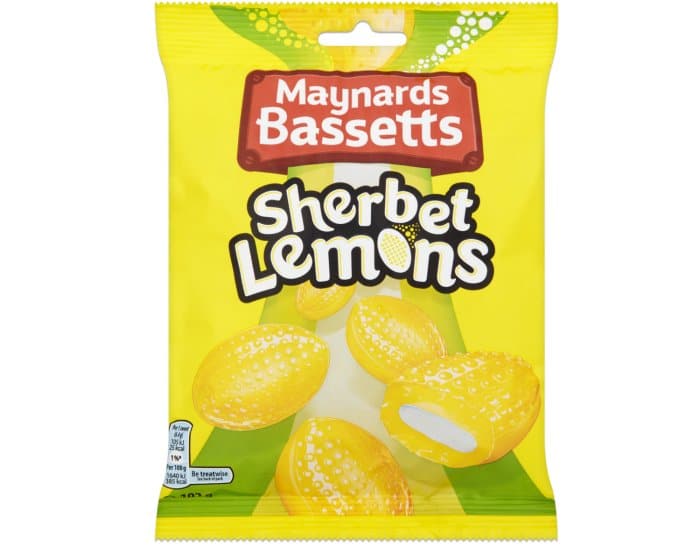
Sherbet Lemons are a slightly sour and effervescent version of the classic Lemon Drops Candy. Sherbet Lemons have gained more recent notoriety as a result of their inclusion in the Harry Potter books, which led many Americans to be confused about what they were. This served as a point of comparison for American candy lovers who wanted to understand what they might be missing, even though it wasn’t exactly the same as a lemon drop.
Nowadays, it is possible to buy sherbet lemons from internet merchants, giving those who were curious about the candy that Albus Dumbledore and Harry Potter were discussing an opportunity to do so.
The core of traditional Sherbet Lemons is slightly fizzy, making them a favorite among people who enjoy acidic sweets with this kind of feature. Sherbet Lemons were once the only sour-sweet with this distinctive flavor, today, many sour candies have this type of fizzy core.
The initial home of sherbet flavoring was Iran. When it was initially created in Iran, this taste was typically only used in beverages. Malts and other formulas for beverage shops were flavored with sherbet powder when it was first created in the 19th century. This additive made everything it was added to a little bit effervescent because soda at the time wasn’t consistently fizzy. Sherbet Lemons are made of a substance called sherbet powder.
Health Benefits Of Lemon Drops
Possible Support in Cancer Treatments
Medical studies on Lemon Drops candy made with actual lemon juice have demonstrated that it can assist cancer patients with their salivary glands. They support boosting salivation flow as a result of excessive radiation and chemotherapeutic treatments.
Cure for Dry Mouth
To avoid dry mouth, patients with Xerostomia (dry mouth), a common side effect of various cancer therapies such as medications and radiation therapy, are frequently advised to suck on tart hard candies such as lemon drops.
Relief for Sjögren’s Syndrome
Sjögren’s syndrome is usually linked to an auto-immune illness. Sjögren’s syndrome causes inflammation of the glands as well as excessive dryness in the mouth, eyes, and other organs. Sucking on Lemon Drops or other hard candies will assist the dry salivary glands by encouraging them to produce saliva.
Ingredients
- Corn Syrup
- Sugar
- Citric Acid
- Lemon Juice From Concentrate
- Lemon Oil
- Malic Acid
- Titanium Dioxide (Color)
- Yellow 5
Brach’s Nutrition
| Serving Size: | 4 pieces (17g) | % Daily Value* |
| Amount Per Serving | ||
| Calories | 60 | |
| Calories from Fat | 0 | |
| Total Fat | 0g | 0% |
| Sodium | 5mg | 0% |
| Total Carbohydrates | 16g | 5% |
| Sugars | 11g | |
| Protein | 0g | |
| Vitamin A | 0% | |
| Vitamin C | 0% |
- Percent Daily Values are based on a 2000-calorie diet.
Pictures
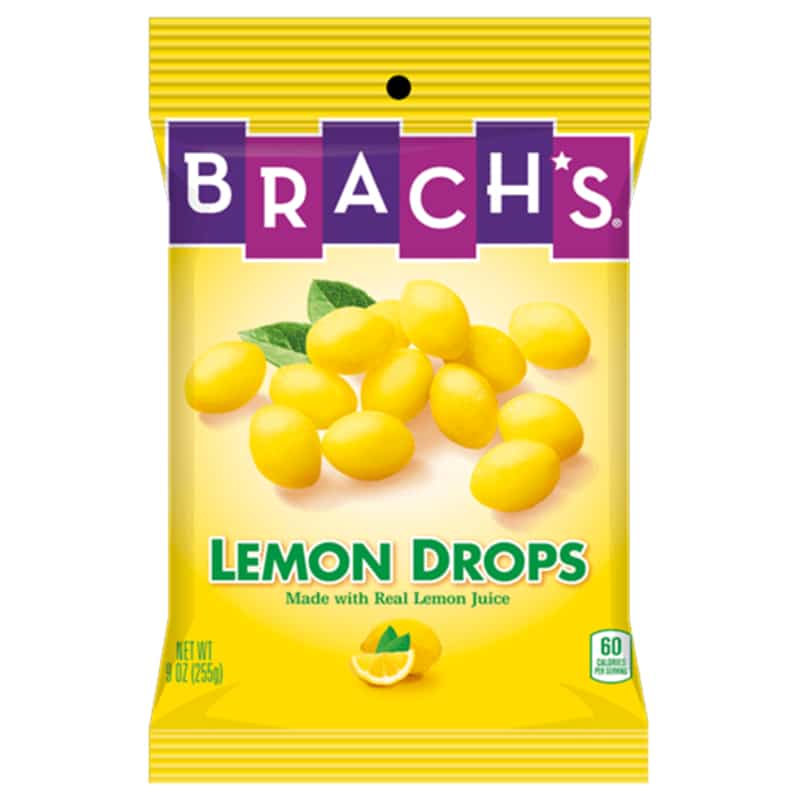
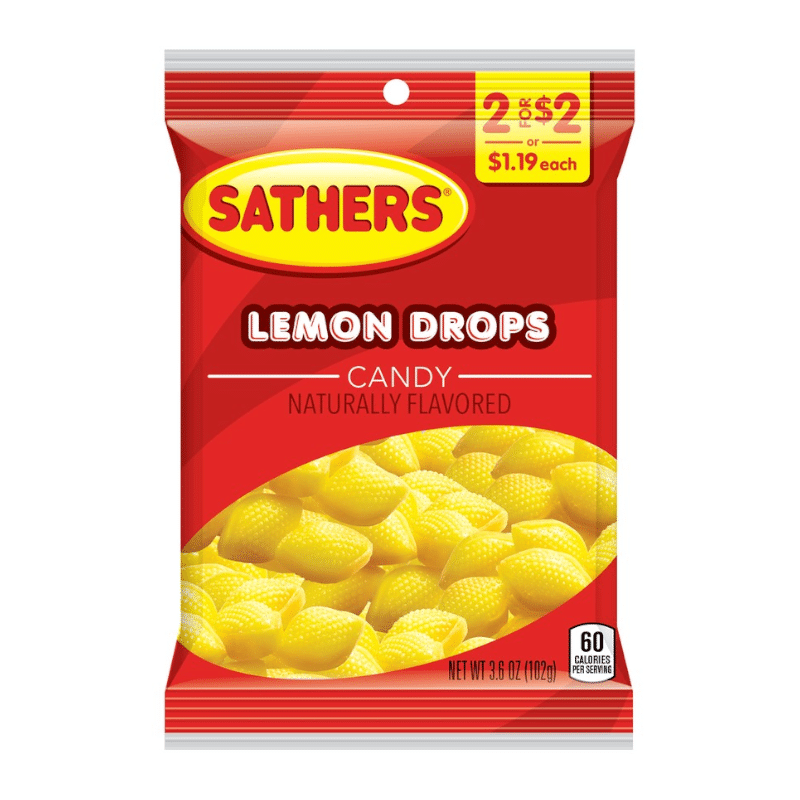
Bottom Line
Lemon drop candy is a very traditional and simple treat that has been around for a very long time. This sweet may have a tangy, sour flavor with a hint of sweetness. It is frequently a firm confection with a hard or squishy core. When candies were used to transport medication, Lemon Drop candies were more widely consumed. This was one of many tastes that could be used to mask a variety of unpleasant substances intended to improve mood.
It took some time before Lemon Drops were marketed solely for candy consumption. They were one of the first candies to be used for therapeutic purposes.

Nato is a content writer and researcher with a background in psychology. She’s passionate about writing about the candy industry and exploring the cultural significance of sweets and treats. She believes that the stories behind our favorite snacks can reveal a great deal about our values.
Please leave a review or any memories of this snack in the comments below. Thank you!
Click here for a full A-Z list of Snacks and Candy
